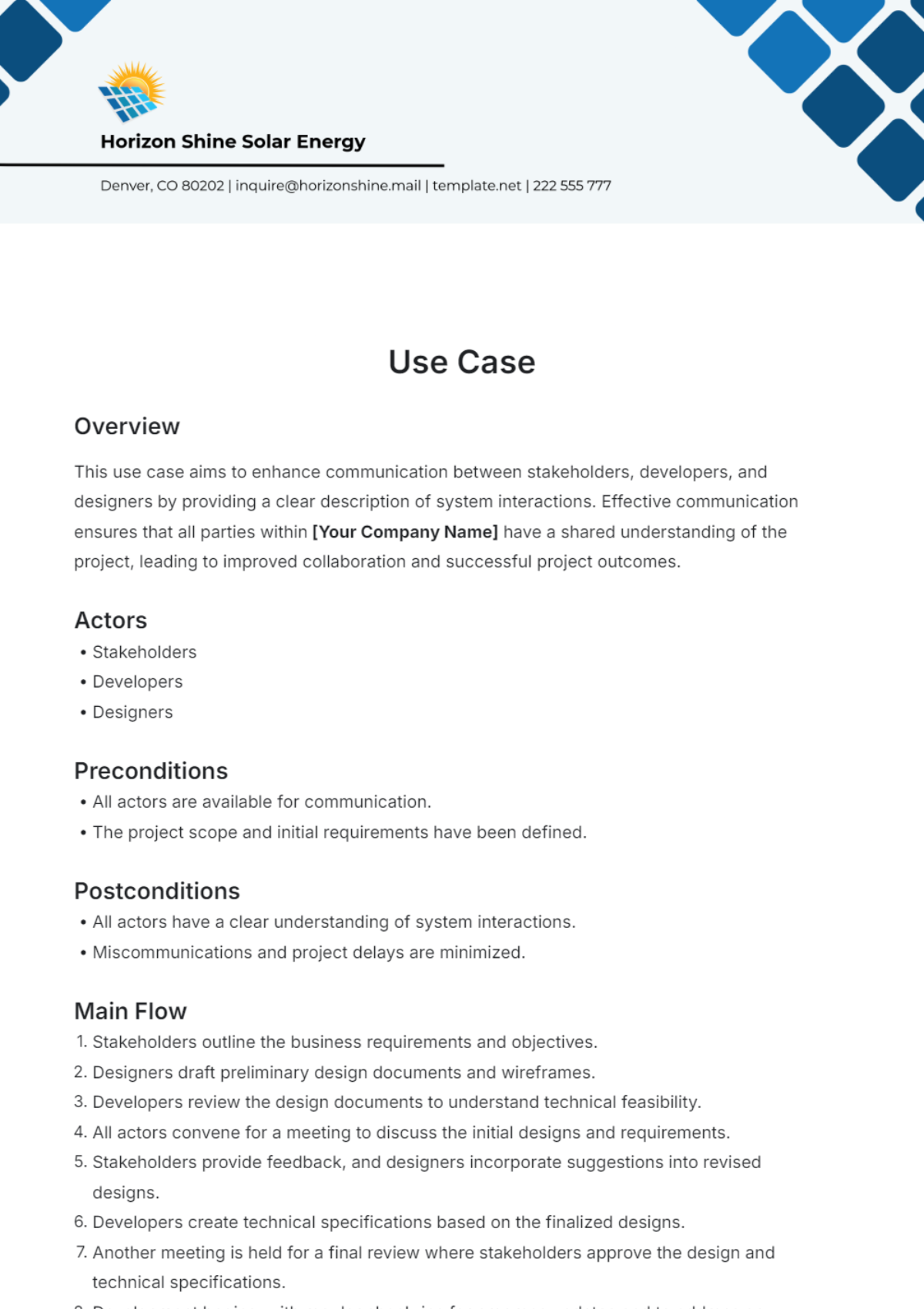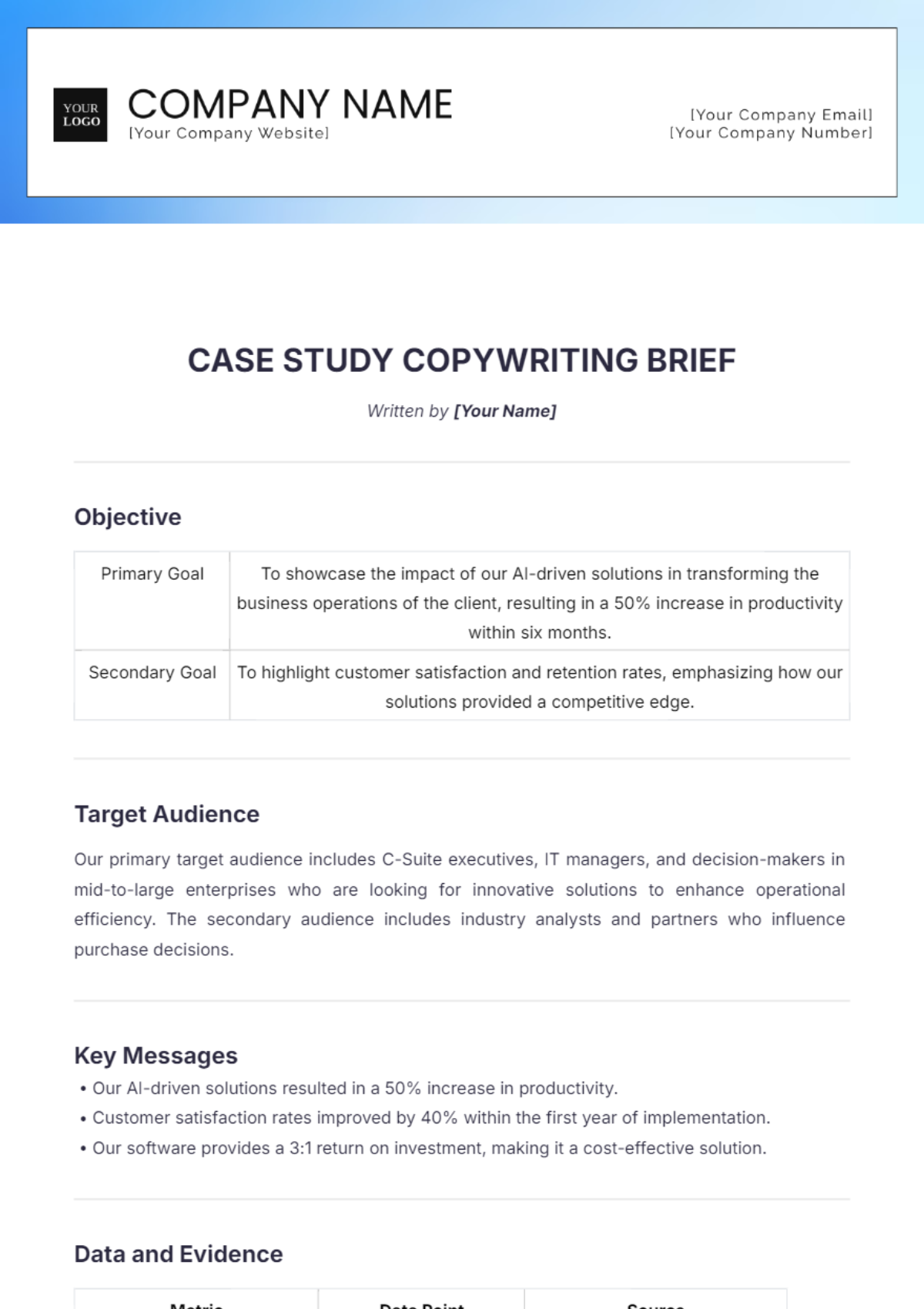Detailed Case Study
I. Introduction
This case study delves into improving [Your Company Name]'s supply chain efficiency within the [Your Industry/Field] through strategies like inventory management, logistics optimization, and improving supplier relationships. It provides valuable insights for decision-makers on overcoming challenges and enhancing operations.
II. Case Study Objectives
The objectives of this case study are to:
Examine the impact of optimized inventory management on overall supply chain efficiency.
Evaluate the effectiveness of logistics optimization strategies in reducing lead times and costs.
Identify key challenges in supplier relationships and propose solutions for better collaboration.
Provide actionable insights for enhancing supply chain performance and competitiveness.
III. Methodology
For this case study, a combination of qualitative and quantitative methods was employed. Primary data sources included internal supply chain data, customer feedback surveys, and interviews with key stakeholders. Data analysis techniques such as ABC analysis for inventory management and cost-benefit analysis for logistics optimization were used to derive meaningful insights and validate findings.
IV. Case Study Analysis
A. Contextual Background
[Your Company Name], a leading manufacturer in the automotive industry, faced challenges in meeting customer demands due to inefficiencies in its supply chain processes. This case study focuses on initiatives undertaken to address these challenges and improve overall supply chain performance.
B. Challenges Faced
Complex Inventory Management: Balancing stock levels across multiple product lines resulted in overstocking and stockouts.
Lengthy Lead Times: Inefficient logistics processes led to extended lead times, affecting delivery schedules.
Supplier Disruptions: Lack of visibility and communication with suppliers led to production delays and quality issues.
C. Solutions Implemented
Inventory Optimization: Implemented an ABC analysis approach to categorize inventory items and prioritize stocking levels based on demand patterns.
Logistics Streamlining: Implemented route optimization software and renegotiated contracts with logistics partners to reduce transportation costs and lead times.
Supplier Collaboration: Introduced regular performance reviews, improved communication channels, and established contingency plans to mitigate supplier disruptions.
D. Outcomes and Results
Improved Inventory Turnover: Reduced excess inventory by 20% and improved inventory turnover rates by 30% within six months.
Reduced Lead Times: Decreased average lead times from supplier to production line by 25%, enhancing responsiveness to customer orders.
Enhanced Supplier Relationships: Increased supplier reliability by 15%, leading to fewer production delays and improved product quality.
V. Lessons Learned
Data-Driven Decision Making: Leveraging data analytics for inventory and logistics optimization is crucial for efficiency gains.
Collaborative Partnerships: Building strong relationships with suppliers through communication and performance monitoring is vital for supply chain resilience.
Continuous Improvement: Regularly reviewing and updating supply chain processes ensures adaptability to market changes and evolving customer demands.
VI. Recommendations
Invest in Supply Chain Analytics: Implement advanced analytics tools for real-time monitoring and predictive analysis of supply chain metrics.
Enhance Supplier Collaboration: Foster closer ties with key suppliers through joint planning, information sharing, and collaborative problem-solving.
Continuous Training and Development: Equip supply chain teams with training programs and workshops on emerging supply chain technologies and best practices.
VII. Conclusion
This case study highlights the tangible benefits of optimizing supply chain operations in improving overall efficiency, reducing costs, and enhancing customer satisfaction. By implementing data-driven strategies, fostering collaborative partnerships, and embracing a culture of continuous improvement, [Your Company Name] can sustainably enhance its competitive advantage in the dynamic market landscape.

















































